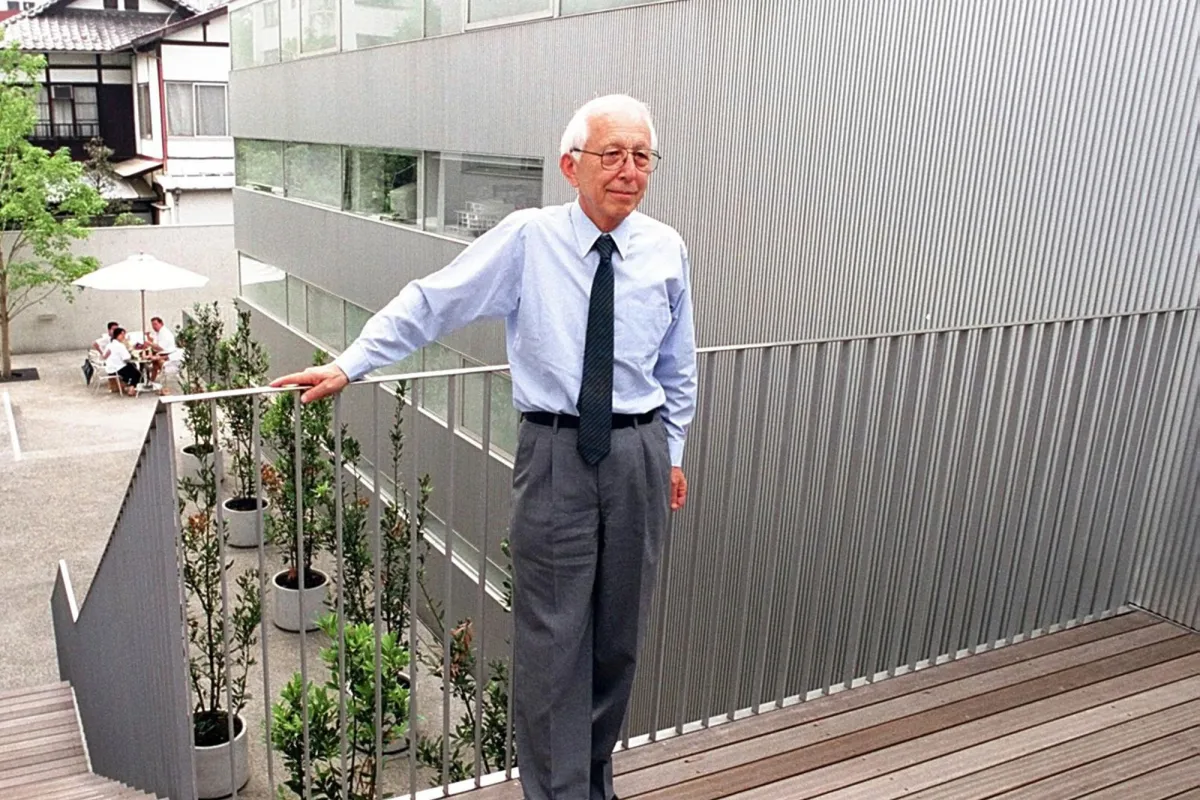Share This Article
When it comes to architecture, Fumihiko Maki is one of the few special names always mentioned. The journey of Maki from a young architectural practitioner in Tokyo towards becoming one of the leading and influential global architects for his revolutionary architectural practice is very motivating.

Early Life and Education
Born on 6th September 1928 and raised in Tokyo, Japan, where tradition and advanced technological progress coexist, Maki was exposed to both traditional and contemporary aesthetics. His early interests were in structures and design, which took him to the University of Tokyo to study architecture and graduated in 1952. Undeterred, Maki went in search of more learning and pursued his higher education at Cranbrook Academy of Art in Michigan before transferring to Harvard University?s Graduate School of Design where he was privileged to learn from Walter Gropius the founder of the Bauhaus School.

Architectural Philosophy and Influences
Metabolism was an architectural movement in post-war Japan that envisioned architecture and the city as organisms, as something that could grow and transform. This influence is shown in flexibility, modularity, and incorporation of the natural milieu into architecture as postulated by Soumyen. Maki?s work usually exhibits the transition of traditional Japanese elements to a modernist functionalist approach that embodies spiritually uplifting spaces. This unique approach of Fumihiko Maki’s modern architecture made him the leading figure in the world of architecture.
During his childhood and adolescence in the United States, he came across European modernists like Le Corbusier and Mies van der Rohe whose work inspired him due to their work?s strong focus on simplicity, clarity, and the use of industrial elements. However, Maki was cautious never to simply reproduce these concepts and tried to integrate something peculiarly Japanese into his designs. Of all Japanese contemporary architects, Maki is one of the first who demonstrates the synthesis of these trends into a unique and progressive architecture language.
Notable Projects
Throughout his career, Fumihiko Maki has designed several memorable structures that can be found not only in Japan but also internationally. One can consider his masterpiece the Tokyo Metropolitan Gymnasium, which is a great example of his approach to form and function. Constructed for the Tokyo Olympics held in 1964, this facility demonstrates how Maki?s design philosophy revolves around dynamic public spaces that can adapt to multifunctional uses as well as serve both public and private domains.
Another architectural project is the Spiral Building in Japan which also reflects his works in art and architecture. The building offers art galleries, shops, and performance spaces and is in the form of a series of spirals suggesting the dynamic nature of art. These works are important Tokyo architectural landmarks projects and express Maki?s powerful impact on Tokyo?s cityscape.

Contributions to Modern Architecture
The influence of Fumihiko Maki not only affects his projects in modern architecture. He has taught and mentored many architects during his time at schools and universities, such as the University of Tokyo and Harvard University. His writings and lectures enriched the understanding of the transformation of cities and the architectural impact on perceiving reality.
Environmental consciousness and sustainable development are among the values that define Maki?s work. He has been pushing for the use of green materials and technology in the construction and design of buildings even before these concepts were popular in the architectural fraternity. His buildings feature green areas, daylighting, and natural ventilation that improve the users’ quality of life and reduce the environmental impact.
Awards and Recognitions
Throughout the years, Fumihiko Maki has been rewarded for his works and achievements in the field of architecture many times, including the AIA Gold Medal, UIA Gold Medal, and Praemium Imperiale award from the Japan Art Association. Among them, the most renowned is the Pritzker Prize, and, as mentioned earlier, he received it in 1993. Known as the premier award in architecture, the Pritzker Prize celebrated aspects of Maki?s work such as his originality and the architectural spaces that are functional as well as lyrical. Maki himself is one of the top Pritzker Prize architects, and his works can be considered one of the most outstanding examples of modern architecture.

Personal Anecdotes and Legacy
However, beyond the awards and the architectural masterpieces, Fumihiko Maki is best described as humble and passionate about his work. Many of his peers and learners describe him as a highly detail-oriented person and a loyal advocate for quality work. However, he still feels strongly connected to his Japanese heritage and can often be seen incorporating elements from this culture and geography into his work.
A personal story that best illustrates Maki?s personality relates to his design approach to the Kaze-no-Oka Crematorium. It took Maki weeks to study the nature, light and dark contrast, and wind before finalizing his design for the stadium. This way the construction met not only functional needs but also matched the surroundings and is today offering a place for reflection and memories.

Impact on the Global Architectural Landscape
The impact of Fumihiko Maki on the international architectural paradigm is vast. This has helped architects all over the world to think out of the box by incorporating both ancient and contemporary styles in architecture.
Modern cities across the globe face numerous questions related to urbanisation, and the concepts of flexible, people-oriented construction proposed by Maki are relevant. Some of his projects are a good example of how design can improve life, promote interaction, and be eco-friendly.

Conclusion
Fumihiko Maki is not only an architect but a visionary who influenced the development of modern architecture. Nevertheless, Maki has contributed to education through his designs and has remained loyal to his convictions till death. Many of his creations, including the iconic buildings in Japan, continue to draw inspiration from others to create buildings that are in harmony with the past and the future.
Sources
- http://maki-and-associates.co.jp/firm/index.html
- https://www.pritzkerprize.com/biography-fumihiko-maki
- https://www.archdaily.com/tag/fumihiko-maki
- https://www.britannica.com/biography/Maki-Fumihiko
- https://www.pritzkerprize.com/laureates/1993
- https://www.britannica.com/biography/Maki-Fumihiko
- https://www.re-thinkingthefuture.com/know-your-architects/a353-25-projects-of-fumihiko-maki-that-fuse-the-eastern-and-the-western
- https://www.pritzkerprize.com/biography-fumihiko-maki#:~:text=Maki%2C%20who%20was%20born%20in,Art%20in%20Bloomfield%20Hills%2C%20Michigan.
- http://architecture-history.org/architects/architects/MAKI/biography.htmlhttps://www.world-architects.com/en/architecture-news/headlines/fumihiko-maki-1928-2024

